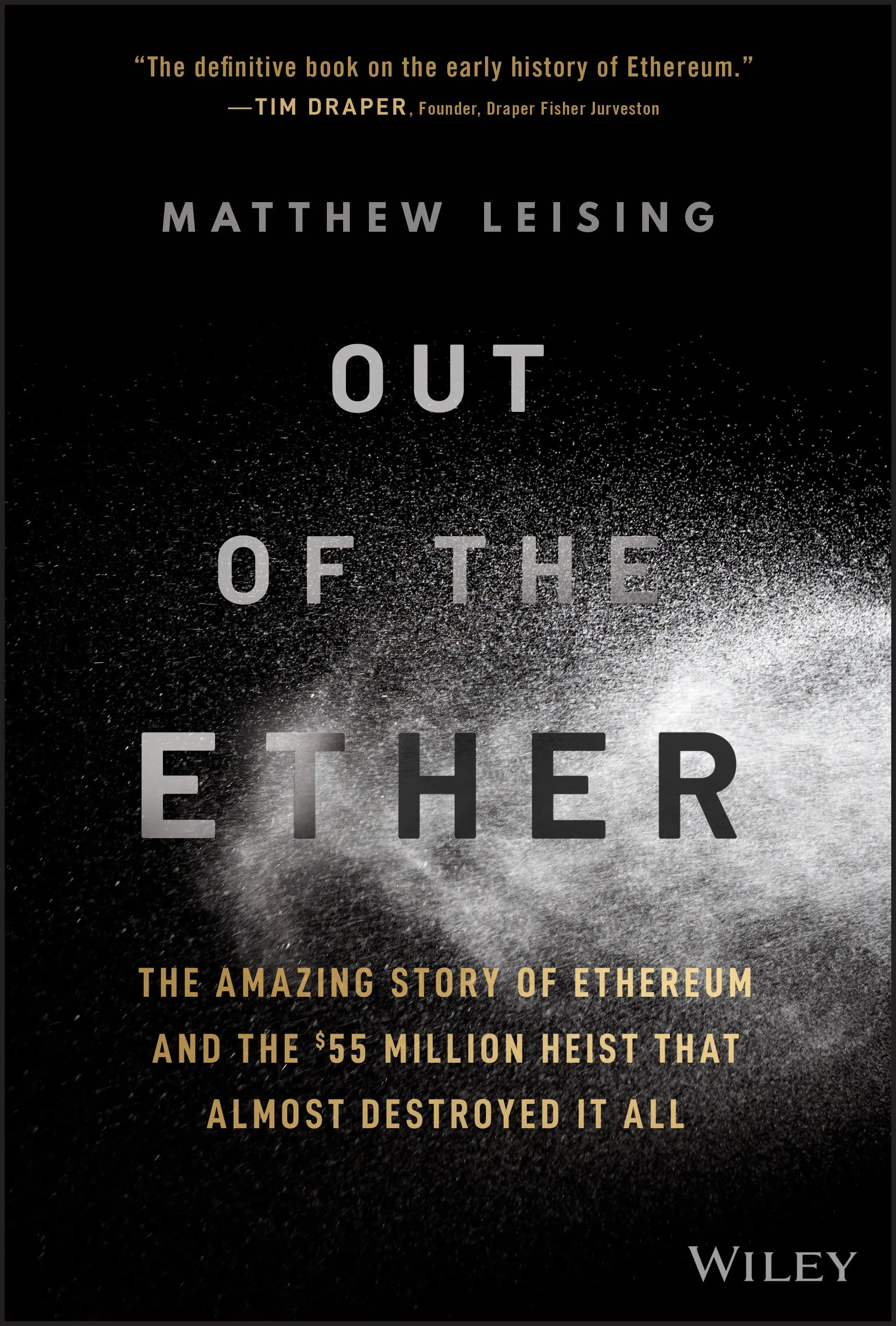In brief
- Matthew Leising's new book, “Out of the Ether: The Amazing Story of Ethereum and the $55 Million Heist That Almost Destroyed It All,” is being released this month.
- In it, the Bloomberg News reporter follows a trail of clues as he tries to discover the perpetrator of the 2016 DAO hack.
- The book also acts as a history of the early days of the Ethereum blockchain.
If the biggest mystery in Bitcoin is Satoshi’s identity, Ethereum’s may be: Who was behind the DAO hack?
Bloomberg News technology reporter Matthew Leising has devoted the better part of four years to answering that question. In his forthcoming book, “Out of the Ether: The Amazing Story of Ethereum and the $55 Million Heist That Almost Destroyed It All,” due out September 23, he lays out who he came to suspect.
The DAO hack was a June 2016 attack on the first Ethereum-based decentralized autonomous organization, which had raised $150 million in a crowdsale. An unknown attacker, or attackers, exploited a flaw in a smart contract and absconded with $50 million worth of ETH.

The DAO hack is a seminal moment in Ethereum history because it posed an existential threat to the network. Fallout from the hack led to the splitting of the network into the Ethereum Classic blockchain, where the illicit transactions remained in place, and the Ethereum blockchain, where they were essentially erased.
Given the hack’s importance to the nascent currency, it makes sense that it provides the lens through which Leising can explain how Ethereum came to be the second-largest cryptocurrency.
“I just wanted to tell the big story of the early history, of course, because I’ve gotten to know a lot of the people,” Leising told Decrypt. “And they’re just a fascinating group of people.”
The book, then, is equal parts oral history and whodunnit, with Leising in the role of lead detective. Throughout the book, he follows a series of tips and clues that lead him to encrypted messages on the Ethereum blockchain, hastily drained exchange accounts, and, ultimately, a Japanese cryptocurrency broker with access to an exchange account involved in the heist.
While in the book Leising describes the man’s explanations as a “dog-ate-my-homework excuse,” he told Decrypt, “I don’t have a smoking gun. I can’t say with any certainty that he did it. But he didn’t deny that that was his account.”
Instead, he said, he left it up to the reader to decide.
As ambiguous as that might feel, it’s actually not that important, just as learning the identity of Satoshi wouldn’t change that much for Bitcoin. It’s not even necessarily the top reason to read the book.
That reason would be the level of access Leising was able to secure, not just to talkative public figures like Vitalik Buterin and Joe Lubin, but to just about everyone involved in founding, accidentally endangering, or saving Ethereum.
“There’s a lot of people I spoke to, and everybody was really generous with me. Apart from a few people, like [eighth Ethereum co-founder] Jeff Wilcke and [former Ethereum Foundation Executive Director] Ming Chan, I spoke to everybody involved in the early days and in the Foundation and in slock.it [which coded The DAO].”
As for his attempt to find the Ether thief, Leising told Decrypt, “I sprinkled it throughout the book to keep people’s interest and try to explain in as easy a way as I could one of the craziest heists that’s ever happened.”
Which makes sense. After all, Leising said, “It just gets weirder and weirder and weirder the deeper you go. I tried to just bring people along and tell a good story.”

